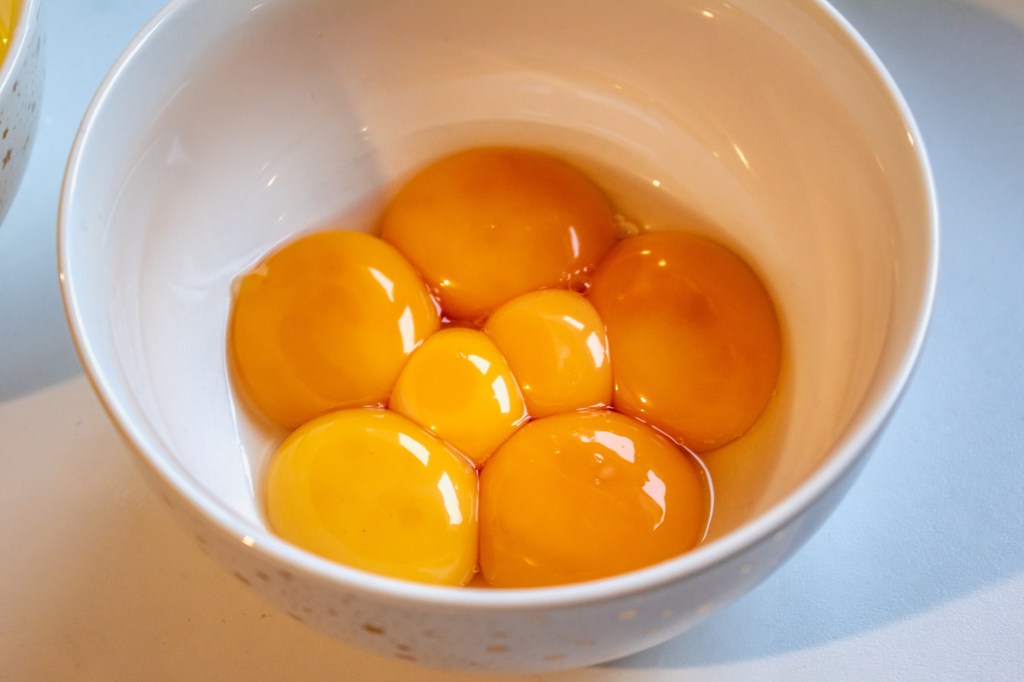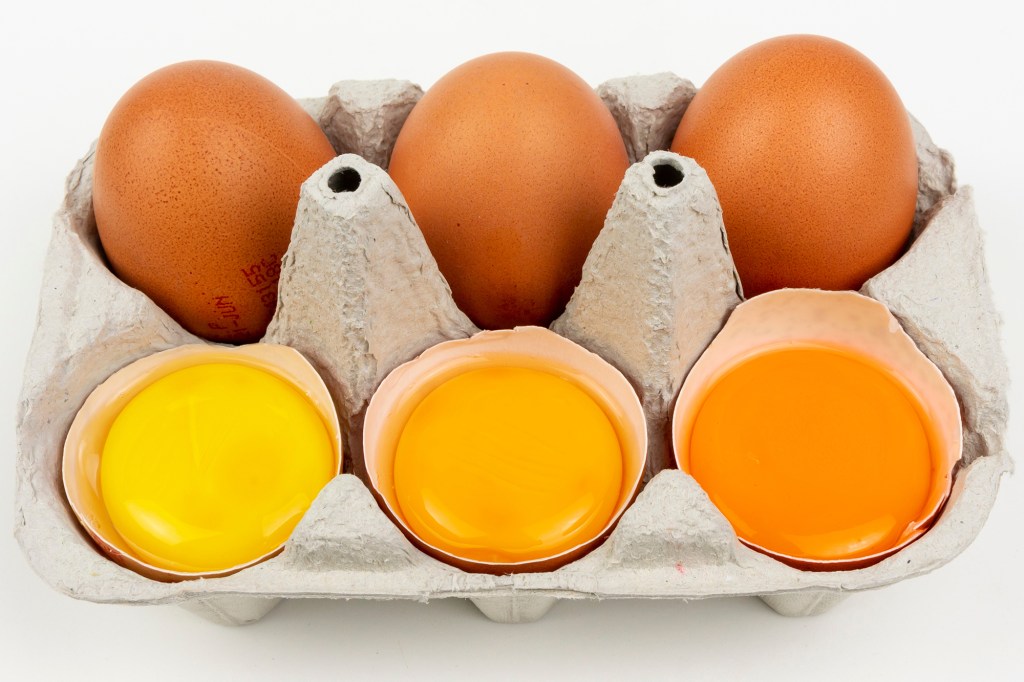Eggs are weighing the color of your egg yolk.
While Americans lose an average of about 300 eggs a year, you’ve likely cracked open an egg to see a slightly different yolk than what you’re used to, whether it’s bright orange or pale yellow.
“The color of the yolk can range anywhere from almost white to a blood red color,” said Richard Blatchford, PhD, a poultry researcher and associate specialist in Cooperative Extension: Small to Industry Scale Poultry in the Department of Science of Animals at UC Davis. Summer.
“But extremes are very rare to see.”
One shade is not necessarily better than the other, but the different shades do make sense, especially in relation to how the chicken was raised.
Poultry experts track yolk colors using the DSM Yolk Color Fan, a 16-scale color index used in the industry to score yolk color, with each number corresponding to a different shade.
Sunoh Che, DVM, PhD, assistant professor of poultry management at the University of Maryland, told F&W that while many aspects can affect egg yolk color, it mainly depends on the hen’s feed and diet.
“Chickens with access to grass and fresh pastures tend to produce eggs with more vibrant yellow colors,” Che said, adding that these chickens get protein sources from insects, as well as carotenoids and xanthophyll from plants.

“Not all plant material is equal when it comes to xanthophyll content — some have higher concentrations and different types,” said Hillary Ayers, family and consumer science agent with the University of Florida’s Institute of Food and Agricultural Sciences. Orange County Extension.
The amount of yellow-orange carotenoids (plant pigments) in chicken feed — such as lutein from alfalfa meal and zeaxanthin from marigold flower extract — “significantly affects the color of the yolk,” Che explained.
Corn is another ingredient that can affect color. “Grocery egg-producing hens are typically fed a corn-based diet,” Blatchford added. “That’s why most of our grocery store eggs are a yellow color, but not too bright.”

Here’s what your yolk color means, according to Jen Houchins, PhD, RD, director of nutrition research at the American Egg Board’s Egg Nutrition Center:
- Pale yellow: A pale yellow indicates a diet rich in wheat, barley or white cornmeal.
- Bright yellow: Bright yellow or yellow-orange yolks mean the chicken had a diet high in cornmeal and/or alfalfa.
- Orange: A deeper orange yellow can come from a diet that includes foraging, “where chickens can access various plants and insects whose pigments can affect the color.” Chickens tend to be outside more during the spring and summer, which increases the probability of foraging. This color can also be produced by adding marigold petals or red pepper to chicken feed, although Houchins noted that artificial color additives are not allowed in the US.
Although yolk color is largely determined by the chicken’s diet, it doesn’t necessarily affect yours.
“The nutritional content of eggs — including the fat-soluble vitamins A, D, E and K — depends more on the hen’s diet, health, breed, age and environment than on the color of the yolk,” Che said.
“Pasture-raised chickens often produce eggs with higher levels of nutrients like omega-3 fatty acids and vitamins because of their varied diet, not because of the intensity of the yolk color.
However, Houchins added that the color of the yolk can determine how much carotenoid is in an egg, which is linked to good eye health as well as reduced risk of cancer, diabetes and body inflammation, according to the National Institutes of Health. The deeper the orange, the more carotenoids the egg is likely to contain.
“Beyond carotenoids, however, yolk color does not indicate a more or less nutritious egg,” Houchins said.
#Food #scientists #find #yolk #color #eggs
Image Source : nypost.com